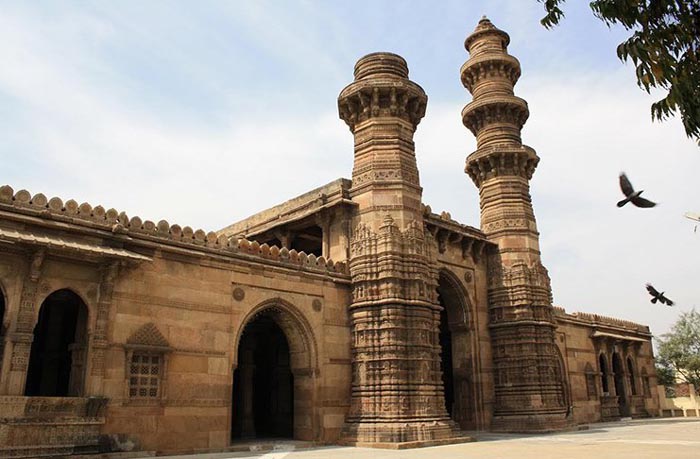Sidi Bashir Mosque

Information on Sidi Bashir Mosque (Ahmedabad, Gujarat) - History & Architecture
Sidi Bashir Mosque is one of the most stimulating and eccentric masjids of Gujarat. Situated in Ahmedabad city of Gujarat, Sidi Bashir Mosque is regarded as an architectural phenomenon of India. The masjid is popular for its trembling towers and hence, it is regarded as one of the most popular tourism places in Gujarat. Owing to its unique construction, Sidi Bashir Mosque is also known as Jhuta Minar or Shaking Minarets.
Sidi Bashir Mosque Religious Significance
Apart from architectural significance, Sidi Bashir Mosque is also popular for its religious worth. It is a prominent Islamic landmark in Ahmedabad. There are several myths regarding the creation of Sidi Bashir Mosque. According to one myth, Sidi Bashir Mosque was created by Sidi Bashir on whom the name was given. In this context, Sidi Bashir was a slave of Sultan Ahmed Shah, the creator of Ahmedabad city.
There is another view of the story which states that Sidi Bashir Mosque was created by Sultan Malik Sarang. He was a noble in the court of Muhammed Begada. Whosoever created the masjid, it is presently has become an important place for worship for Muslim devotees. Each day several Muslims throw prayers in the masjid and express their wishes. It is believed that the creation of Muhammed Begada was finished in the year 1452. Till then, Muhammed Begada acted as a religious place for Islamic pilgrims.
Sidi Bashir Mosque Mythology
The exclusive architectural character has made Muhammed Begada a popular one in Ahmedabad. The masjid was ingeniously made by designers during Mughal era. The building of Sidi Bashir Mosque is philosophical with regard to the admirable architectural ability that was brought to India by Mughal emperors. There is another masjid in Gujarat named Raj Bibi Masjid which also possesses similar construction design of Sidi Bashir Mosque.
The key aspect which makes Sidi Bashir Mosque unusual is that if any individual smears a little strength or a moderate push on the upper curve of the tower, it tends to sway. Such phenomenon was first observed by a Sanskrit researcher in 19th century. Nevertheless, according to historical records, a British person had dismantled one of the tower for understanding the reason of this mechanism. However, his effort was unsuccessful and there is still certain mystery regarding why and how the towers can sway backward and onward for a small push. In reality, local engineering students also used Sidi Bashir Mosque as a case study for examining the elasticity of construction instruments that were used in order to create the towers. But unfortunately, the tower which was dismantled could not be put back in the masjid again. A similar fashion of shaking towers can also be observed in a monument named Monar Jonban which is situated in Isfahan of Iran.
Sidi Bashir Mosque Architectural Significance
Sidi Bashir Mosque is famous for its 21 meter tall shaking towers. The towers was created in order to safeguard the masjid against the damage caused from natural calamity. There are two towers in Sidi Bashir Mosque and every tower is thornily engraved with hanging galleries. It is believed that a mere shaking in one tower can resulted in vibration to other tower after few seconds. Nevertheless, the adjoining passageways between the towers stays free from vibration. Due to such architecture and prodigy, Sidi Bashir Mosque has a proud history of its own. It is quite popular destination for travellers where they can enjoy the brilliant construction of the masjid. However, entrance to the shaking tower is forbidden owing to an event in Qutb Minar of Delhi where a pandemonium crumpled many children.